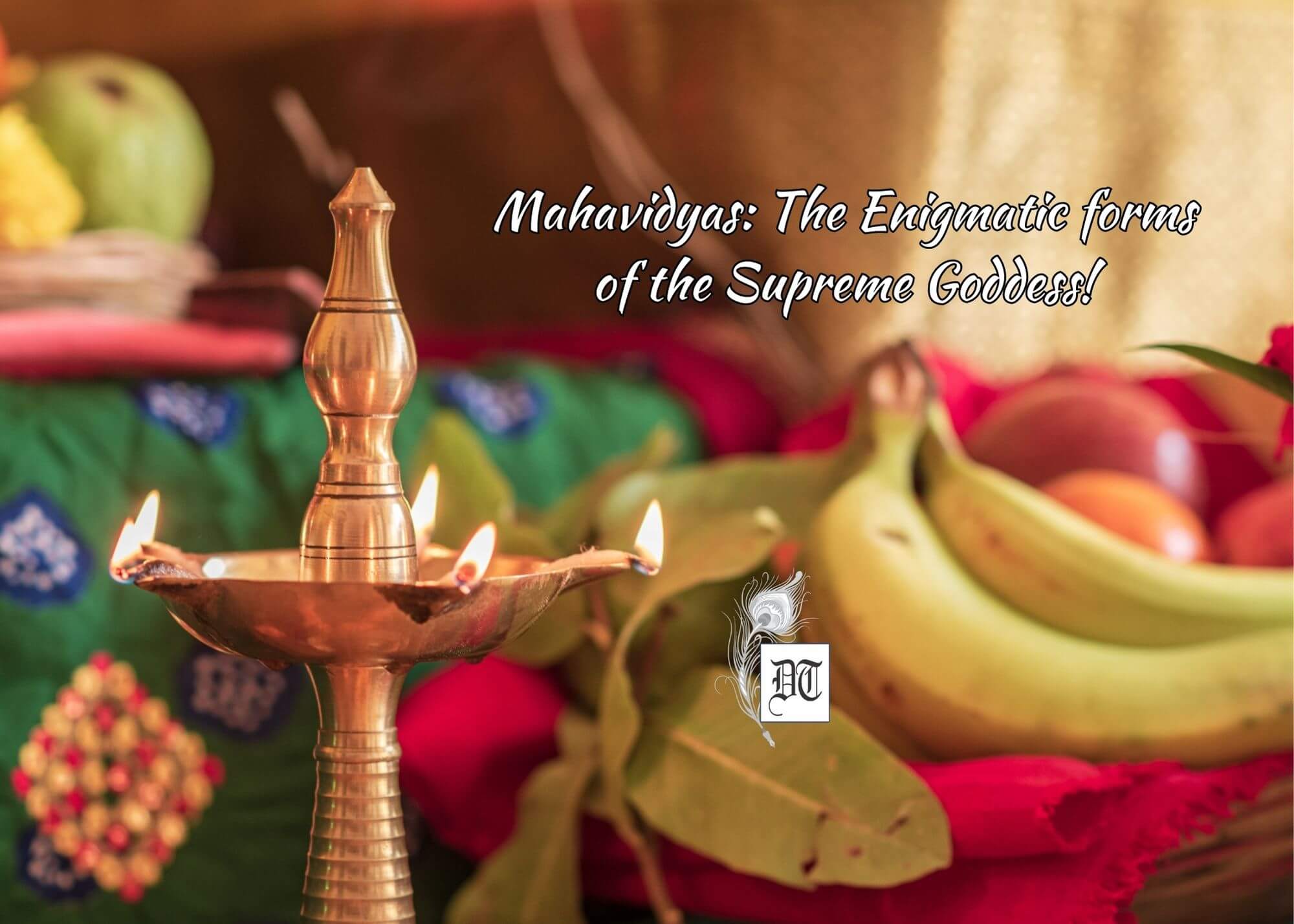Gupt Navratri is a mystical time for worshipping ten Mahavidyas, for spiritual enlightenment, transformation, and worldly blessings, informs Rajul – exclusively for Different Truths.

It is the time of Ashadha Gupt Navratri, an auspicious time to revere, worship, and attain mystical spiritual and worldly boons from the Goddess herself! Many people do not know about Gupt Navratri which comes twice a year. It is because it is the dedicated time of the year for the worship of Mahavidyas and is, of course, a secret. Only sadhaks or practitioners celebrate it by performing associated rituals. Many people asked me about this Navratri, so here are the answers.
The worship of Mahavidyas, a group of ten powerful goddesses, holds a significant place in Hinduism, particularly within the Shakta tradition. Each Mahavidya represents a different aspect of the Divine Mother and embodies distinct qualities, symbols, and powers. The worship of Mahavidyas emerged during the medieval period and gained prominence through various tantric practices. Let’s explore the time of worship, the significance of Mahavidyas, and the legends associated with them.
The worship of Mahavidyas became prevalent during the 9th to 12th centuries CE.
The worship of Mahavidyas became prevalent during the 9th to 12th centuries CE. Tantric texts, such as the Tantrasara and the Mahanirvana Tantra, contain detailed descriptions and rituals related to the Mahavidyas. Tantrism, a spiritual path that seeks to attain enlightenment through harnessing and transforming energy, provided a framework for the worship of these goddesses. Tantric practitioners engage in intense rituals, mantra recitation, and meditation to connect with the divine energies represented by the Mahavidyas
Each Mahavidya represents a unique aspect of the Divine Mother, encompassing both light and dark qualities. They are
- Kali: The fierce and powerful goddess who represents the destruction of ego and the ultimate reality beyond life and death.
- Tara: The goddess of compassion and protection who helps her devotees overcome fear, obstacles, and challenges.
- Tripura Sundari or Lalita: The goddess of beauty and divine love, symbolizing the union of the individual soul with the universal consciousness.
- Bhuvaneshwari: The goddess who embodies the entire universe and represents the creative power of the Divine Mother.
- Bhairavi: The goddess associated with fierce forms and the transformative power of destruction. She symbolizes the dissolution of attachments and the destruction of ignorance.
- Chinnamasta: The goddess who embodies self-sacrifice and represents the power of spiritual awakening through the shedding of ego.
- Dhumavati: The widow goddess who represents the aspects of non-duality, loss, and the transformative power of letting go.
- Bagalamukhi: The goddess who grants the power of speech and protects her devotees by restraining and silencing negativity and opposition.
- Matangi: The goddess associated with inner strength, independence, and knowledge. She represents the power of the spoken word and creative expression.
- Kamala: The goddess of abundance, wealth, and prosperity. She symbolises spiritual and material wealth and nourishes her devotees with her divine grace.
The legends behind the Mahavidyas vary, but they often revolve around the Devi Mahatmya or the Durga Saptashati…
The legends behind the Mahavidyas vary, but they often revolve around the Devi Mahatmya or the Durga Saptashati, an ancient text that describes the exploits of various forms of the Goddess. According to one legend, the Mahavidyasare the ten aspects of the Goddess that manifested to combat the demon Mahishasura. Each Mahavidya emerged from different deities to contribute their unique powers to defeat the demon and restore balance.
There are four Navratris in a year, Chaitra and Sharad Navratris are celebrated by all Hindus all over the world. Some observe fasting, and some worship the corresponding Mahavidyas on those days too. But these two ‘Gupt’ Navratris are especially dedicated to Mahavidya worship and attainment – Magh and Ashadha Navratris. The practitioners perform associated rituals, fast, worship, chant mantras, and do everything they can to gain special blessings from different powerful Mahavidyas. This is a personal prerogative of the practitioner. But attainment and worship of Mahavidyas must be done under the guidance of a dedicated master as there are several tough rules and regulations to be followed. Evidently, it is not an easy path of worship and might even require penance.
The significance of the Mahavidyas lies in their representation of the multifaceted nature of the Divine Mother and the various paths to spiritual realisation. By worshipping these goddesses, devotees seek to attain spiritual awakening, transformation, and liberation. The Mahavidyas are revered for their ability to bestow blessings, protect devotees, and grant spiritual and worldly boons.
… the worship of Mahavidyas holds great significance in Hinduism, particularly within the Shakta tradition.
In conclusion, the worship of Mahavidyas holds great significance in Hinduism, particularly within the Shakta tradition. They represent various aspects of the Divine Mother and embody a wide range of qualities, powers, and teachings. Through their worship, devotees seek spiritual growth, transformation, and the realisation of the ultimate truth. The legends associated with the Mahavidyas further emphasise their divine significance and their role in cosmic balance and spiritual evolution.
Picture design Anumita Roy





 By
By


 By
By